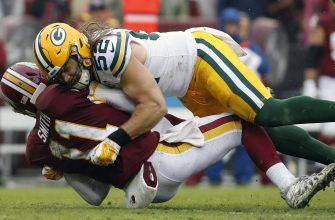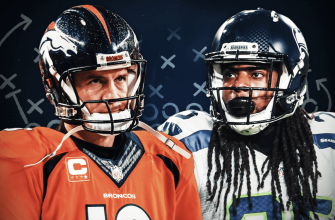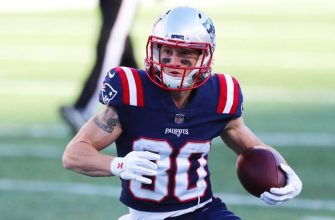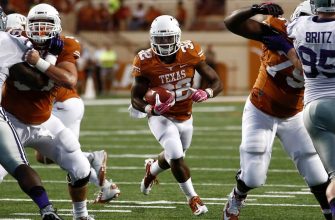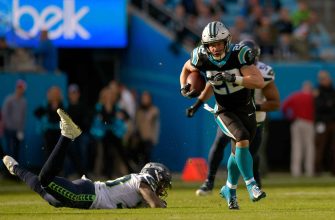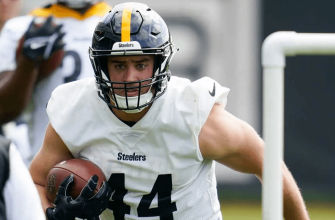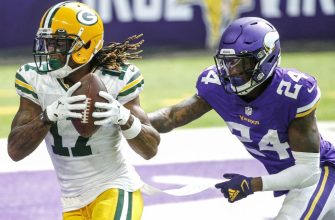The three main linebacker positions in football are the Sam, Mike, and Will linebackers. These linebackers make up the second level of a team’s defense, lining up directly behind the defensive line and in front of the defensive secondary.
While they share some responsibilities in common, each of the Sam, Mike, and Will linebackers also have their own specific roles and alignments on the field. The Sam linebacker lines up on the strong side of the offense, usually up against the tight end. The Mike is the middle linebacker, lining up across from the center or guards. The Will is the weakside linebacker, lining up across from the side of the offense without a tight end.
Together, the Sam, Mike, and Will linebackers work together before the snap to identify the offensive play call and direct their teammates in the defensive alignment. During the play, they must be quick to read, react, and tackle, while also being adept in pass coverage. The unique skill sets required for each position and their importance in defensive schemes have made the Sam, Mike, and Will linebackers essential roles in football.
History of the Positions
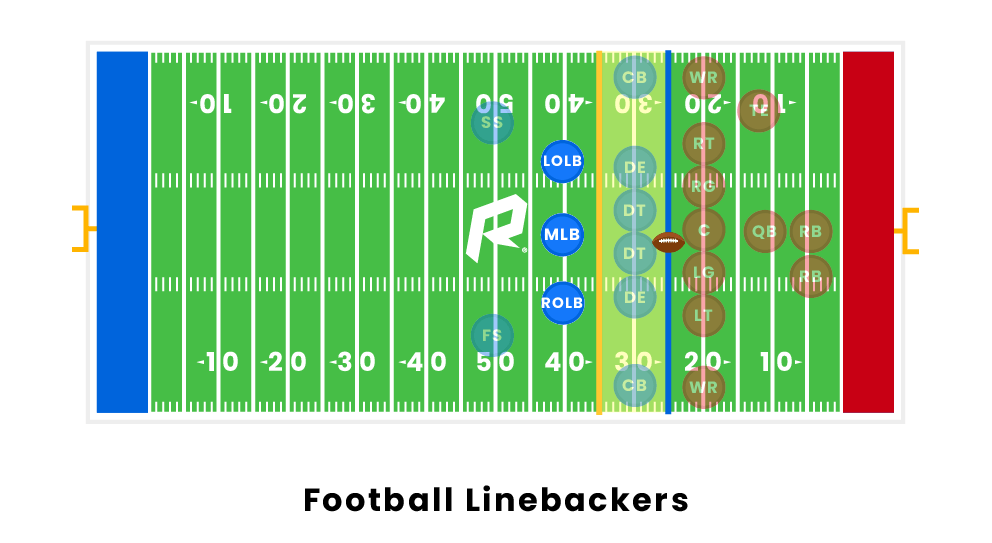
The linebacker positions known as Sam, Mike, and Will have their origins in the 1970s and 1980s as defensive schemes in football became more specialized.
Prior to this time, teams typically used more generic terminology for linebackers like “left linebacker” or “right linebacker.” But as defenses evolved to be more complex, coaches needed a more precise lexicon to designate roles.
The rise of 3-4 defensive schemes in the 1970s made it popular to differentiate between “inside” and “outside” linebackers. Teams that ran a 4-3 defense started using names like “strongside” and “weakside” linebackers.
By the 1980s, terms like Mike, Sam, and Will emerged as a way to identify the alignment and responsibilities of the 4-3 linebackers. The Mike was the “middle” linebacker who often called defensive plays. The Sam was the “strongside” linebacker on the tight end side, while the Will was the “weakside” backer.
This three-letter linebacker terminology became standardized across the NFL and college football as defenses evolved to be more complex. While some coaches still use different names, Sam, Mike and Will are now universally understood terms for the roles and alignments of 4-3 linebackers.
Roles & Responsibilities
The linebacker positions have distinct roles and responsibilities that maximize their effectiveness within the defensive scheme. Understanding what each linebacker does is key to evaluating their performance.
The Mike
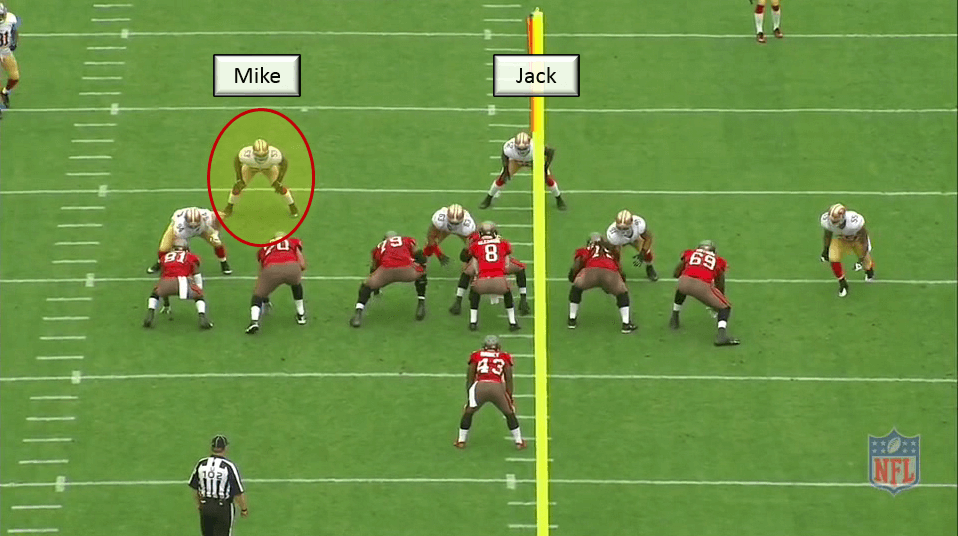
The middle linebacker (Mike) is considered the quarterback of the defense.
Their main responsibilities include:
- Calling defensive plays and making adjustments
- Reading the offensive formation and recognizing tendencies
- Communicating assignments to the defense before each play
- Aligning the defensive front
- Filling rushing lanes and stopping the run
- Dropping into pass coverage over the middle of the field
The Mike is a versatile defender and often the most athletic linebacker, capable of chasing down runners sideline to sideline while also matching up with tight ends and running backs in coverage. They must excel at reading and reacting to plays.
The Will
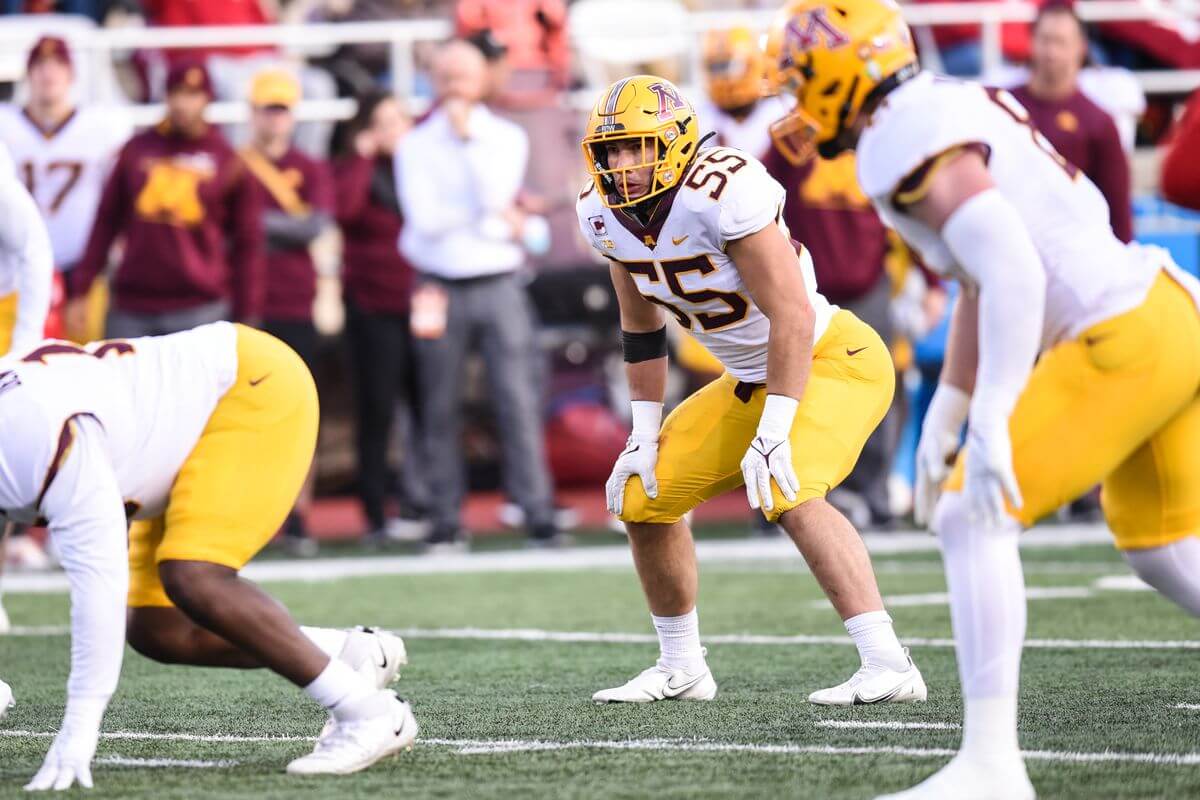
The weakside linebacker (Will) tends to be the fastest and most agile linebacker.
Their main duties include:
- Covering the weak side of the field in pass coverage
- Pursuing and tackling runners attempting to get outside
- Containing the edge against sweeps and tosses
- Rushing the passer as a blitzer
- Tracking down runners in backside pursuit
The Will uses their speed and instincts to flow fast to the ball and snuff out outside runs before they develop. They need to excel in space and coverage.
The Sam
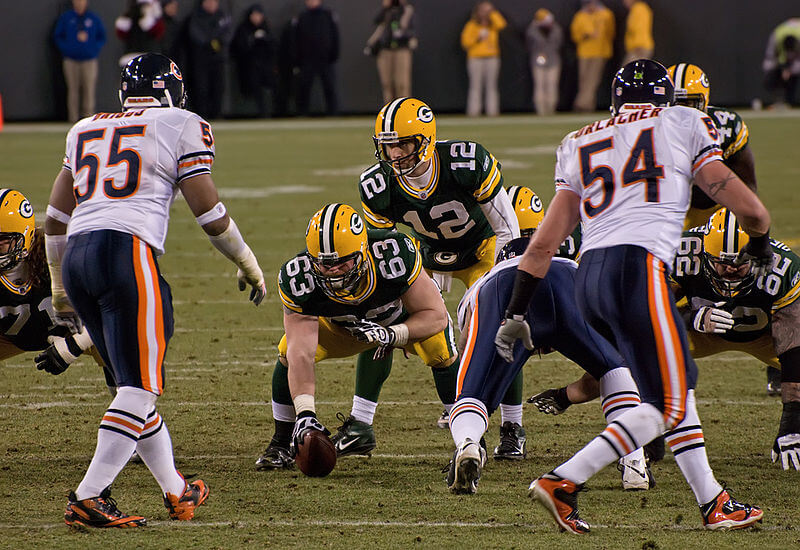
The strongside linebacker (Sam) is usually the bigger and stronger linebacker.
Their responsibilities include:
- Setting the edge against outside runs
- Taking on lead blockers like fullbacks and tight ends
- Rushing the passer as a blitzer
- Dropping into underneath flat zones in coverage
- Maintaining outside run discipline
The Sam acts as an extra lineman against the run but also must operate effectively in coverage when required. It’s a hybrid role requiring both size and mobility.
Alignment
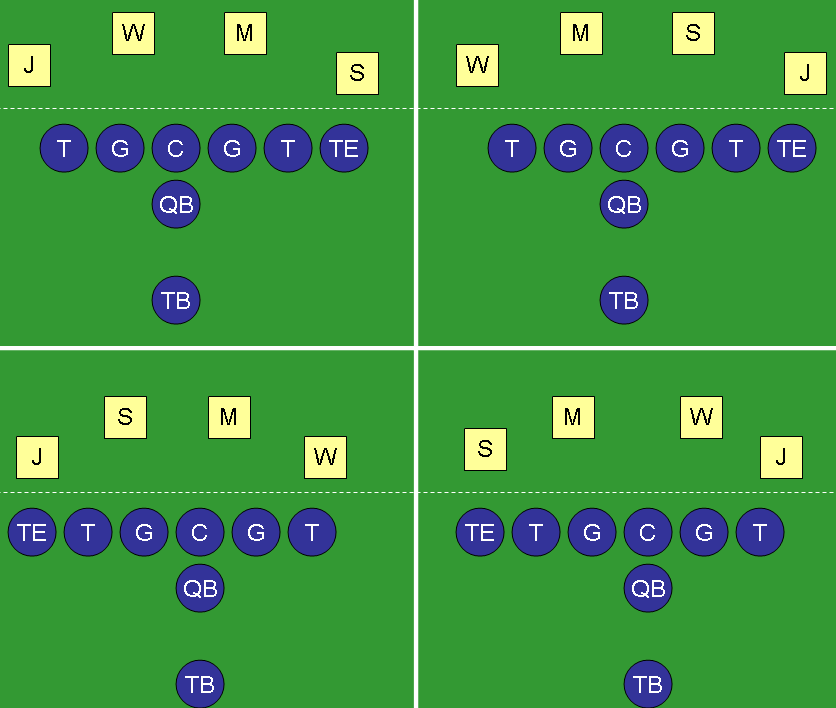
Where the linebackers line up on the field depends on the defensive scheme being used. In a traditional 4-3 defense, there is a Sam, Mike, and Will linebacker.
The Sam linebacker aligns on the strong side of the offense, opposite the tight end. They tend to be larger and stronger to take on blocks from the tight end.
The Mike is the middle linebacker and considered the leader of the defense. They align opposite the center and call out defensive adjustments pre-snap. The Mike reads and reacts to run plays between the tackles.
The Will aligns on the weak side of the offense, away from the tight end. They tend to be quicker and more athletic to match up against receivers. The Will often blitzes or drops into coverage in passing situations.
In a 3-4 defense, there are two outside linebackers (OLB) and two inside linebackers (ILB). The OLBs align on the line of scrimmage on the strong and weak sides. The ILBs play similar roles to the Mike and Will in a 4-3 alignment.
Player Profiles
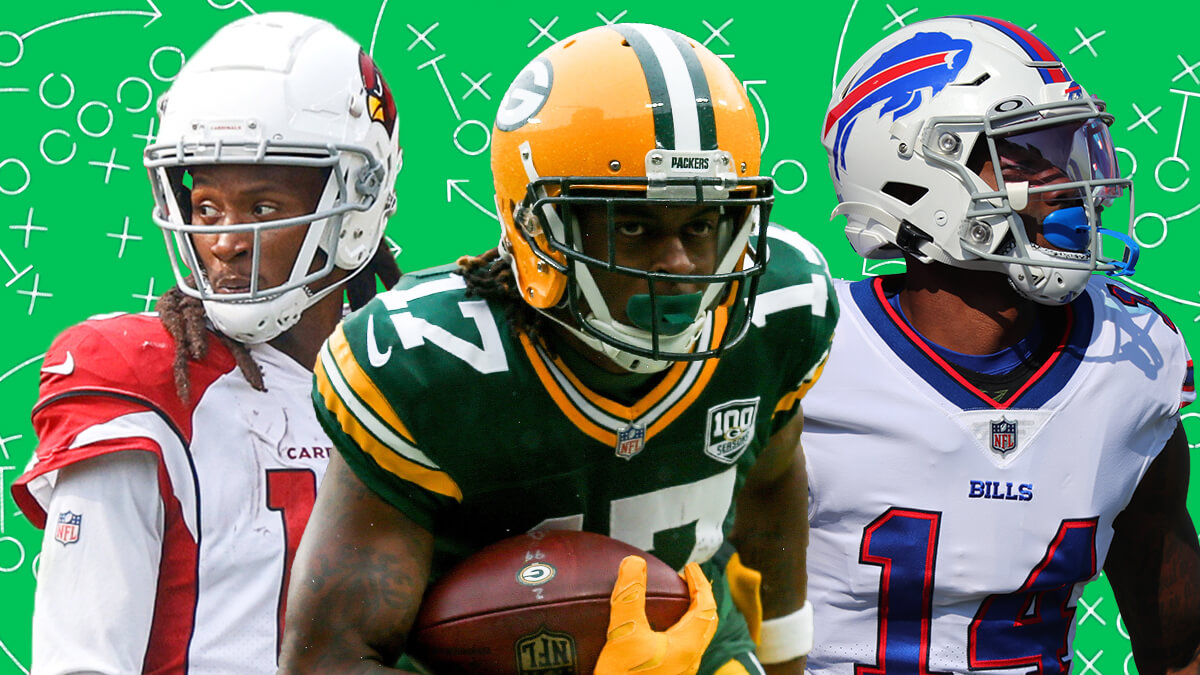
The linebacker positions have been defined by some legendary players over the years.
Here are some examples of prototypical players at each spot:
Mike Linebackers
- Ray Lewis – Considered one of the greatest middle linebackers of all time, Ray Lewis played 17 seasons for the Baltimore Ravens. At 6’1″ and 250 pounds, Lewis had the size and strength to take on blocks and stop the run, along with the speed and athleticism to drop into coverage and defend the pass. He was the prototype for an aggressive, do-it-all middle linebacker.
- Luke Kuechly – A more recent example of a dominant Mike is Luke Kuechly of the Carolina Panthers. Like Lewis, Kuechly has rare instincts and football IQ to diagnose plays combined with the athletic gifts to be a force against both the run and pass. He’s a tackling machine who is consistently among the league leaders in tackles.
Sam Linebackers
- Derrick Brooks – A Hall of Famer who played 14 seasons for the Tampa Bay Buccaneers, Derrick Brooks epitomized the athletic, coverage-focused Sam backer. At 6’0″ and 235 pounds, Brooks had the speed and fluid hips to shadow running backs and tight ends in man coverage, along with the instincts and ball skills to anticipate throws and create turnovers.
- Khalil Mack – The current star Sam LB is Khalil Mack of the Chicago Bears. Mack is one of the most versatile second-level defenders in the NFL, with the burst to beat tackles off the edge as a pass rusher and the range to make plays from sideline to sideline against the run. He’s the prototype for the hybrid Sam role.
Will Linebackers
- Derrick Thomas – The late Derrick Thomas remains the standard for weakside pass rushing linebackers. The 6’3″, 230 pound Thomas was a blur coming off the edge for the Kansas City Chiefs, using his explosive speed and bend to blow past offensive tackles to rack up 126.5 career sacks. He was the quintessential attacking Will backer.
- Von Miller – Taking over Thomas’ mantle as the NFL’s most dangerous Will is Von Miller. Playing for the Denver Broncos, Miller utilizes his 4.5 speed and flexible hips to torment quarterbacks, tallying 115.5 sacks already through his first 10 seasons. His rare physical gifts allow him to rush the passer while also holding up in space in coverage.
Traits & Skills
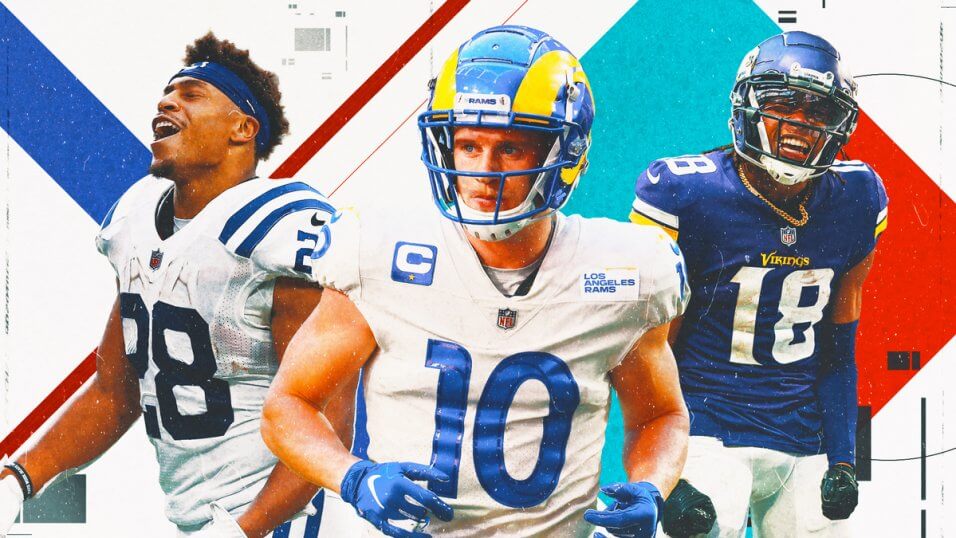
What traits and skills make for a great sam, mike or will linebacker in football?
Here’s an overview:
Sam Linebacker
- Speed and agility – As the linebacker positioned closest to the line of scrimmage, the sam needs to move quickly to contain runs and cover short pass routes. Great change of direction skills are vital.
- Tackling – The sam often faces blockers head-on and must be a strong, sure tackler, especially in the open field. Wrapping up ball carriers is crucial.
- Blitzing ability – With a role focused on rushing the passer, the sam linebacker must have a quick first step and pass rush moves to generate pressure.
- Zone coverage – While not usually in man coverage, the sam must have awareness in zone concepts to take away short routes.
Mike Linebacker
- Instincts and football IQ – As the “quarterback of the defense” the mike must read plays quickly and get teammates in position. High football intelligence is a must.
- Tackling – Playing inside against the run, the mike must fight through traffic and make secure stops. Fundamentals are vital to bring down hard-charging backs.
- Block shedding – With linemen often coming at them, mikes must be able to avoid blocks using hands and leverage to stay clean.
- Leadership – Mikes are often the main communicators, making calls and adjustments. They need to lead vocally and by example.
Will Linebacker
- Speed and range – Usually the fastest LB, wills must chase down plays sideline to sideline and drop deep into coverage. Elite speed is ideal.
- Man coverage – Wills often draw the assignment of running with tight ends and running backs. They must have the quickness to mirror in man.
- Play recognition – With roles all over the field, wills must diagnose plays early to flow to the ball carrier. Quick processing is vital.
- Tackling – Wills act as the last line of defense so securing ball carriers in space is a premium. Fundamentals must be sound.
Differences Between the Positions
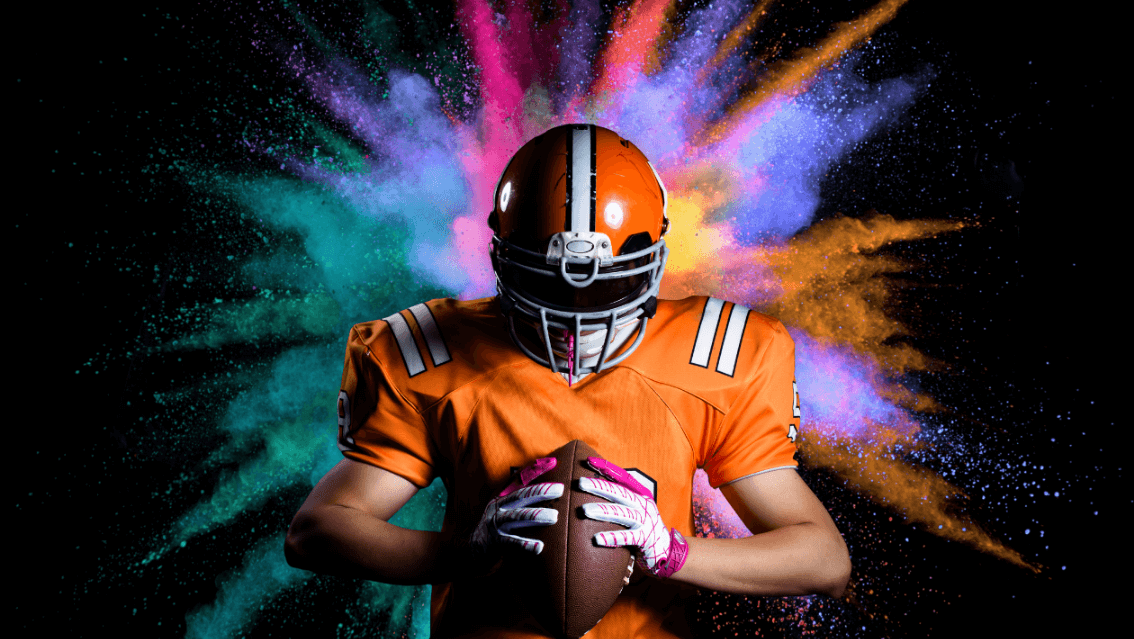
The Sam, Mike, and Will linebacker positions have distinct roles and responsibilities on the football field. While all linebackers must be athletic and have strong tackling abilities, there are key differences between the positions:
Alignment
- The Sam linebacker typically aligns on the strong side of the offense, across from the tight end. They are essentially an edge rusher who must set the edge against the run.
- The Mike linebacker is considered the “quarterback of the defense” and aligns in the middle. They call out plays and make adjustments pre-snap.
- The Will aligns on the weak side of the offense, away from the tight end. They often defend against the run but also drop back into coverage frequently.
Responsibilities
- The Sam focuses on pass rushing and run defense but drops into shallow zone coverage at times. They rush the QB more than other linebackers.
- The Mike is a true inside linebacker who stuffs inside runs but can also cover short zones over the middle and blitz occasionally. They are well-rounded.
- The Will often covers downfield and defends quick pass catchers like running backs and tight ends. They have the most diverse coverage responsibilities.
Physical Traits
- The Sam is often a bit bigger and stronger to set the edge, while the Mike and Will are more lean and agile in coverage.
- The Will is usually the fastest and most fluid athlete, giving them an advantage in downfield coverage.
So in summary, while all linebackers must be athletic and physical, the Sam excels at rushing the passer, the Mike is a field general and run stopper, and the Will thrives in downfield coverage. Each position has a distinct role.
Importance of the Positions
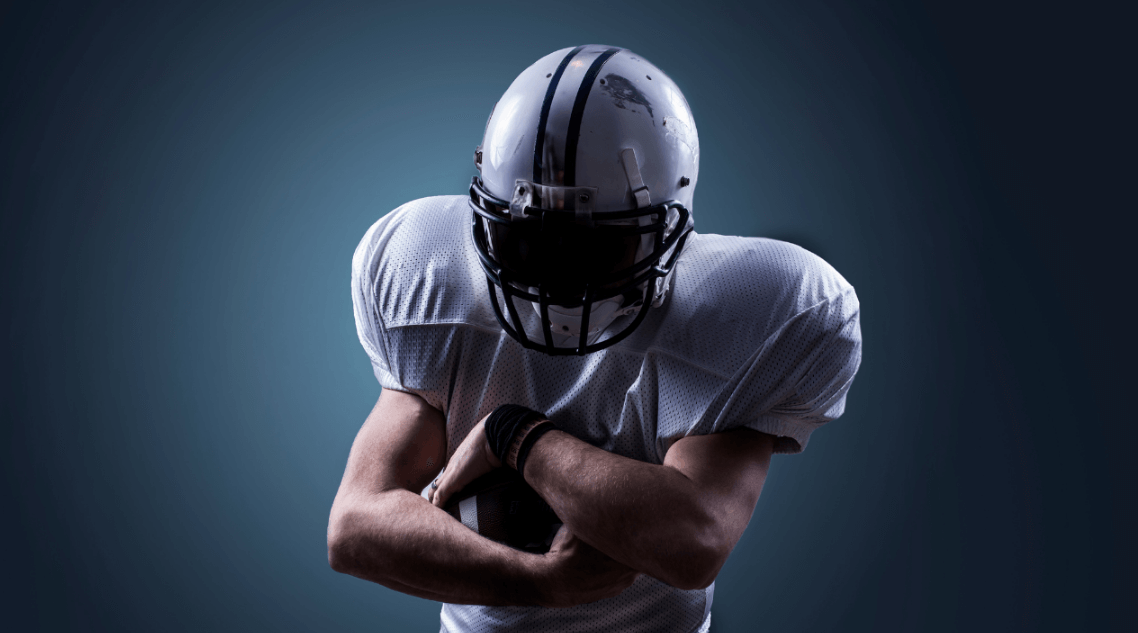
Linebackers are critical to a team’s defense and play an integral role in stopping both the run and the pass. Here is a look at why these positions are so vital:
Stopping the Run
The primary job of linebackers is to stop the run and tackle any running backs that break through the defensive line. They serve as the second line of defense behind the defensive linemen and fill gaps in the line if a running back attempts to run through. Good linebackers are adept at reading where a play is going and attacking the ball carrier. They rely on strength, tackling skills and instincts to limit the opposing team’s rushing yards.
Pass Coverage
While linemen focus mainly on rushing the quarterback, linebackers must also drop back in pass coverage at times. Teams will often employ zone or man-to-man schemes, with linebackers responsible for covering short and intermediate routes over the middle of the field or defending tight ends and running backs coming out of the backfield. Linebackers must have the quickness and agility to stay with receivers in open space. Their pass coverage is critical for limiting completions on short and quick passes.
Blitzing
Linebackers are also regularly used to blitz the quarterback, adding extra pressure by rushing the passer with the defensive line. By blitzing linebackers from different angles, defenses can scheme to overwhelm blockers and collapse the pocket around the quarterback. This leads to more rushed throws, sacks and incomplete passes. Linebacker blitzes are an important part of disrupting opposing passing games.
Overall, linebackers provide much-needed versatility against both the run and the pass. Their well-rounded abilities to stop ball carriers, cover receivers and blitz the quarterback make them indispensable assets on defense. Good linebacker play can often make the difference between a porous defense and an elite one. Their importance to limiting offenses cannot be overstated.
Trends & Evolution
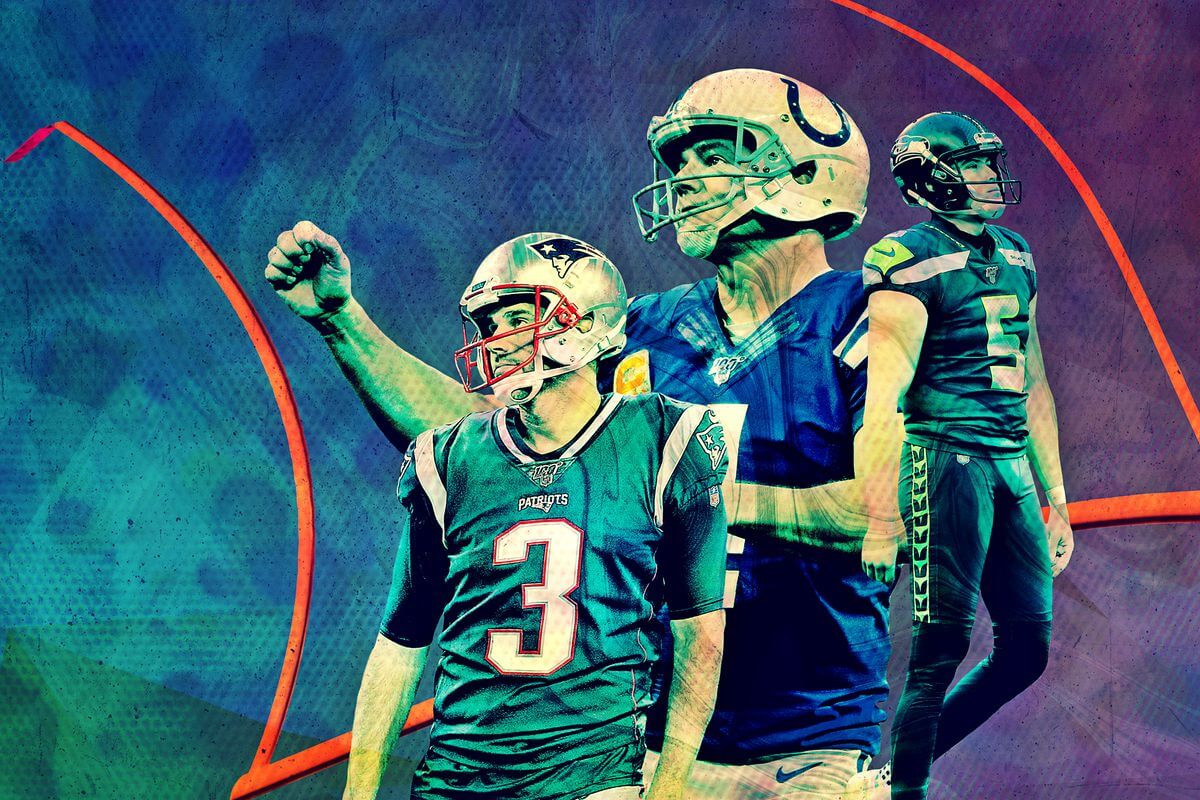
How are the positions changing?
There are several trends that are evolving the linebacker positions in football:
- Increased emphasis on speed and athleticism: Teams are looking for faster, more athletic linebackers who can cover tight ends and running backs in passing situations. Quickness and agility are becoming more valued over size.
- Position flexibility: Linebackers are being asked to be more versatile and line up in different spots. Some linebackers may play on the line in a 3-4 defense or drop back into coverage from the outside linebacker spot. There is less specialization at each position.
- Focus on pass defense: With offenses passing more, linebackers must be able to cover receivers and tight ends. Pass coverage responsibilities are increasing, requiring good instincts and technique.
- Hybrid roles: Some defenses are using hybrid safety/linebacker players to counter pass-heavy offenses. These players are a blend of a traditional linebacker’s run stopping ability and a safety’s coverage skills.
- Data-driven decisions: Analytics are being used more in scouting and schemes to optimize linebacker performance. Linebacker roles and alignments are becoming more specialized based on data and matchups.
- Blitzing creativity: Defenses are designing more complex blitz packages to confuse offenses and bring pressure from unpredictable spots. Linebackers may have more blitz responsibilities.
Overall, the linebacker position continues to evolve in response to offensive innovations. Speed, versatility and pass coverage abilities are increasingly vital for linebackers to succeed.
Conclusion
The Sam, Mike, and Will linebacker positions each serve a critical and unique role in a football defense. Though they share similarities as off-ball linebackers, their alignments, assignments, and required traits can vary significantly.
The Sam linebacker tends to play on the strong side of the field, lining up outside the tight end. They are relied upon to be strong run defenders on the edge, while also being able to drop into coverage against tight ends or running backs. Sam linebackers need to excel at shedding blocks, pursuit, and tackling in the open field.
The Mike serves as the leader and quarterback of the defense as the middle linebacker. They align directly behind the defensive linemen to read the offensive scheme and call out adjustments. Mikes need outstanding instincts, vision, communication skills, and intelligence to excel in this role. Their keys are to step up and stop inside runs while also dropping into middle zone pass coverage.
The Will typically aligns on the weak side of the field without a tight end. Their priority is to flow fast and free to the ballcarrier, whether on runs or short pass routes. Will linebackers require top-notch athleticism, acceleration, and open field tackling ability. They are often the most explosive playmakers of the linebacking group.


